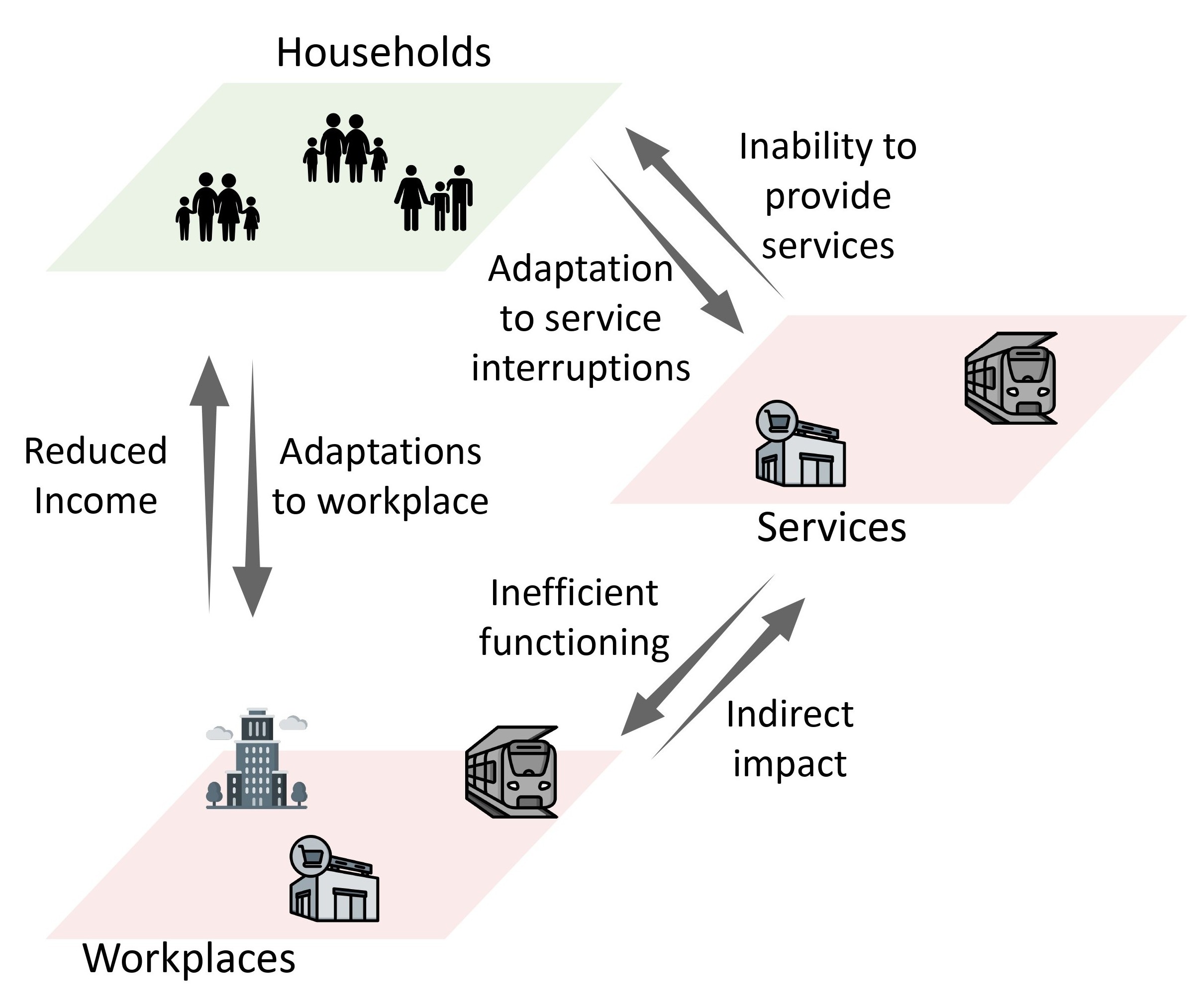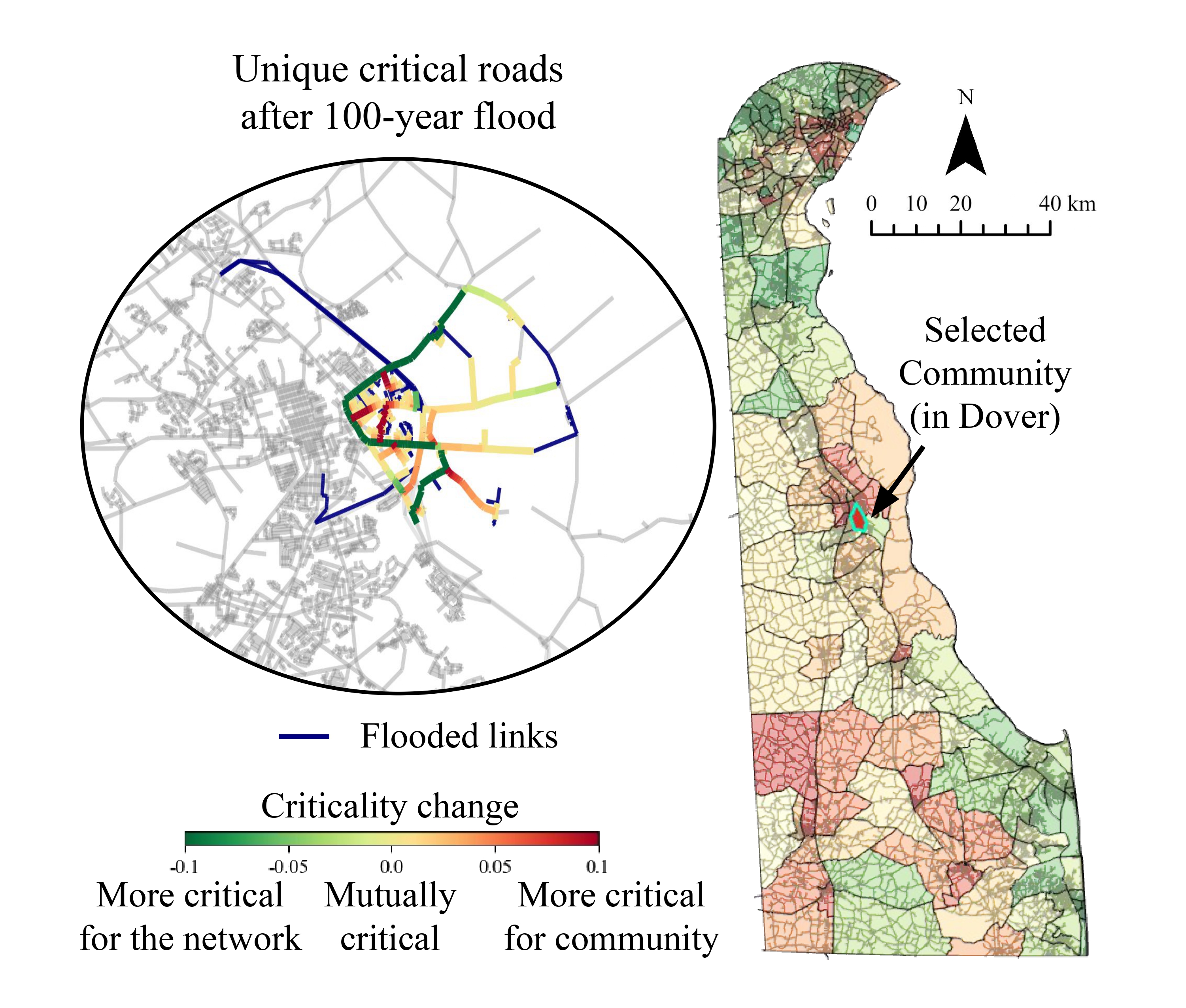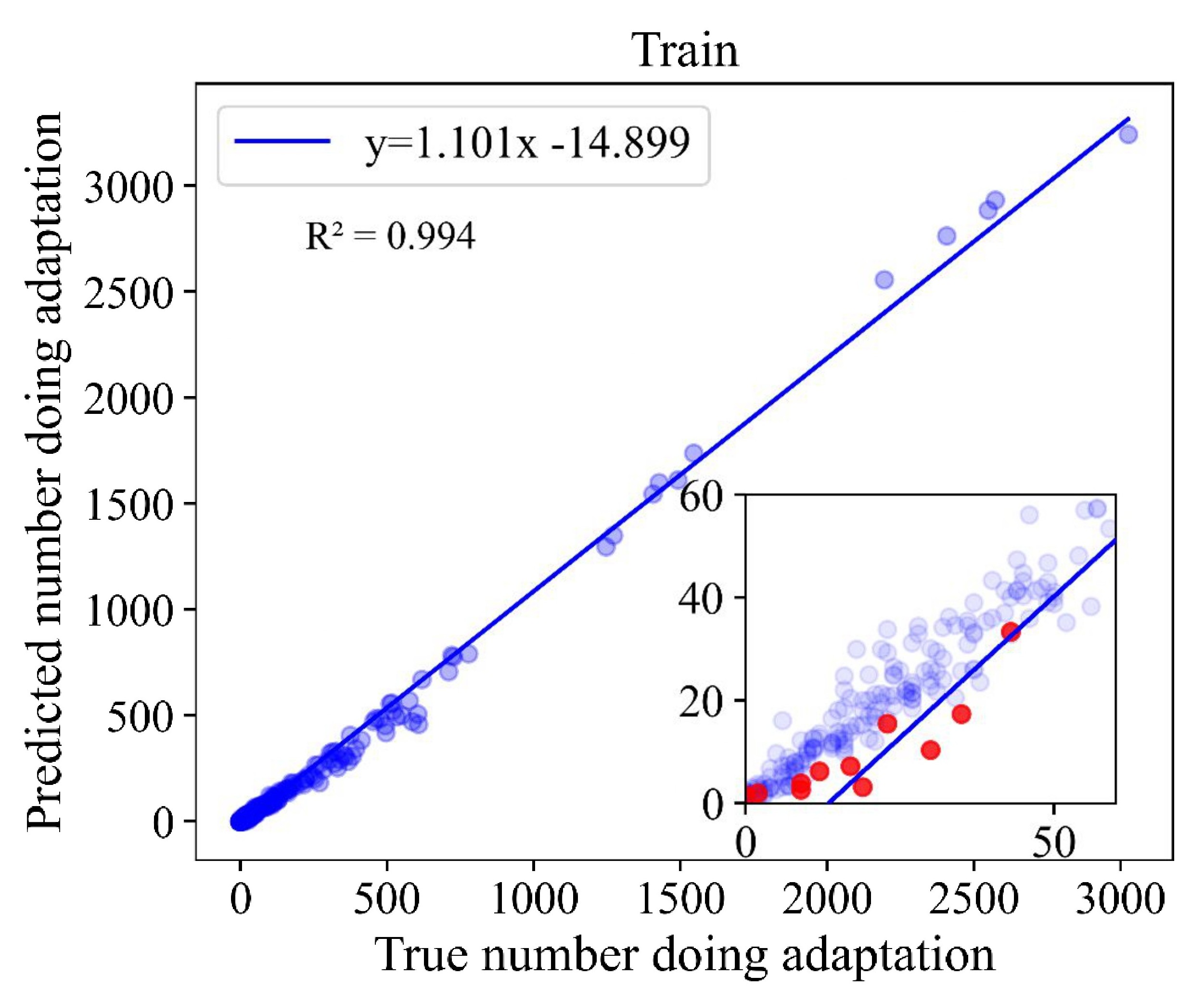Research

Coupled Human-Infrastructure Systems
Coupled human-infrastructure systems capture the intricate interdependencies between communities
and the infrastructure they rely on. These systems are shaped by how individuals and communities
use infrastructure, depend on it, and experience its failures—especially during times of
disruption. Disasters often expose disparities in resilience, as households—such as
those with limited mobility, economic resources, or access to services—face heightened risks
due to their constrained ability to prepare for, respond to, and recover from events.
My research focuses on developing modeling frameworks that simulate these interdependencies to
better understand the dynamics of socio-technical systems. Using system dynamics and complex
network-based approaches, we explore both infrastructure-to-human and human-to-infrastructure
feedback during disasters. This integration enables us to analyze how human behavior affects
infrastructure performance and vice versa, ultimately offering insights into how targeted
interventions can enhance community resilience.
Critical Facility Accessibility and Road Criticality
Critical facility accessibility is essential for disaster response and recovery, yet road
networks often provide uneven access across communities. Disruptions such as flooding can
isolate populations from essential services or significantly increase travel times,
disproportionately affecting communities at risk. This research adopts an integrated
network-based approach to evaluate accessibility by accounting for partial road failures,
multiple types of critical facilities, and changes in travel time during flood events.
Some roads play a disproportionately important role in maintaining access to these critical
facilities. To increase disaster resilience, my work involves identifying the most critical
roads for protection and early recovery. While certain segments are frequently used in
post-flood travel routes, others are vital for preserving access to avoid formation of
service deserts. My research combines complex network-based approaches with optimization
techniques on large-scale networks to identify and prioritize essential roads for
protection and early recovery.


Household Adaptation and Predictive Modeling
Households depend on infrastructure systems for essential services, and during disruptions,
they often adapt by adjusting their demand or supplementing supply to lessen the impact.
These adaptations—whether planned or spontaneous—play a critical role in maintaining
household functioning and resilience, serving as a bridge between infrastructure performance
and community well-being during crises. Understanding these behaviors is vital for supporting
equitable and effective disaster response.
This research aims to characterize and predict household adaptations during infrastructure
service interruptions using econometric models and machine learning techniques. By capturing
how and when households implement various adaptations, the study provides insights for
system operators, emergency managers, and community organizations to better incorporate
adaptive behaviors into planning, restoration efforts, and resource allocation.